One of the most important things to understand in the Digital Design World is that what you see, or better yet, what you think you see on the screen is not necessarily accurate. How many times have you designed a smile case only to produce it and find the centrals are too short, too long, or the midline is canted. Very frustrating, right?
It is VERY important to understand that the 3D you think you see is not real! It is a construct that utilizes a combination of virtual shadow and light in conjunction with algorithms that distort the object as it is manipulated in this fake virtual "3D" space. I call this the "2D-3D Isometric Dilemma" It is your brain that is the true miraculous "computer" that takes this information and translates it into a 3D representation of 2D images. This is also why once you stop moving an object on screen you can very quickly lose perspective and not know exactly what you are looking at.
In order to see the teeth as they really are, you MUST view them exactly straight on from both a left to right and an up and down perspective. Any deviation from this straight on view will begin to distort what you see.
Four things need to be done to correct the viewing perspective.
1. Invoke the Virtual Articulator as the FIRST step when beginning your design.
2. Center the arch on the blue alignment circle. (Figure 1)
3. Position the maxilla properly into the Virtual Articulator. This was discussed in detail in a previous blog. (Figure 2)
4. Utilize the Grid function to accurately determine length and width of the teeth and midline direction. You can trust what you see ONLY when viewing properly! (Figure 3)
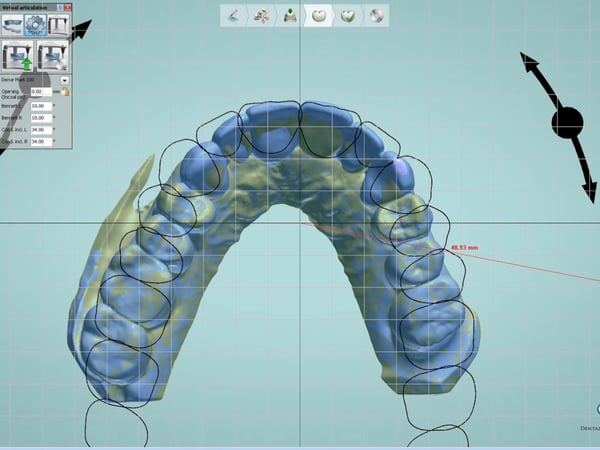 Figure 1
Figure 1
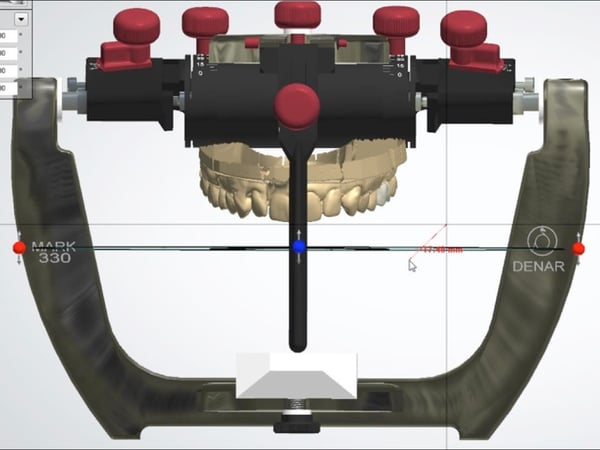 Figure 2
Figure 2
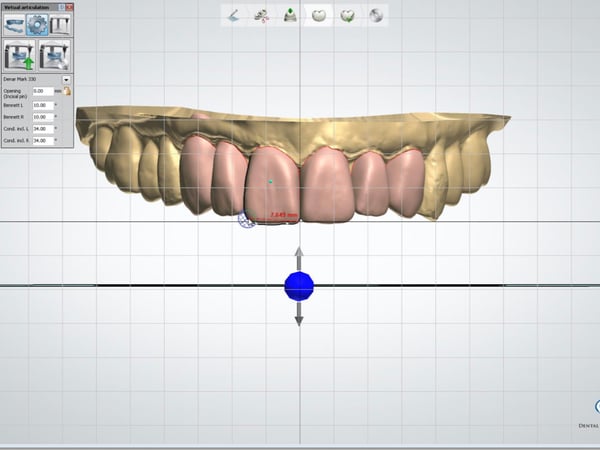 Figure 3
Figure 3
It is IMPOSSIBLE to maintain the proper viewing perspective while modeling the teeth. You MUST refer back to the "Set-Up" function in the VA to re-establish the proper perspective before judging any lengths and/or midline directions. (Figure 4)
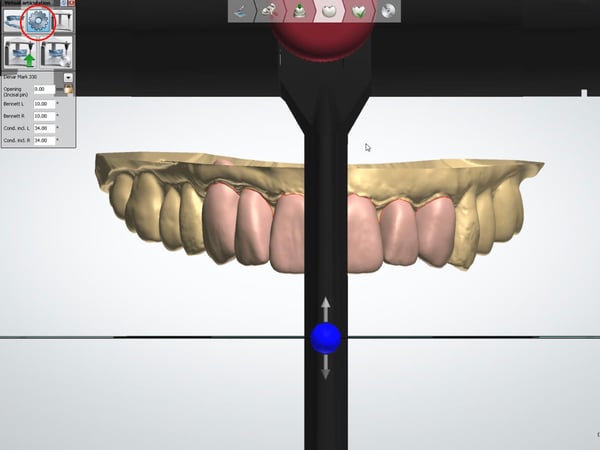 Figure 4
Figure 4
Notice in Figure 5 how the arrangement of the teeth varies due to perspective. The center image is correct. The top images are viewed slightly from the left and the right. Note the distortion of the midline direction. The bottom two are viewed from slightly below and above. Note the distortion to the perceived length.
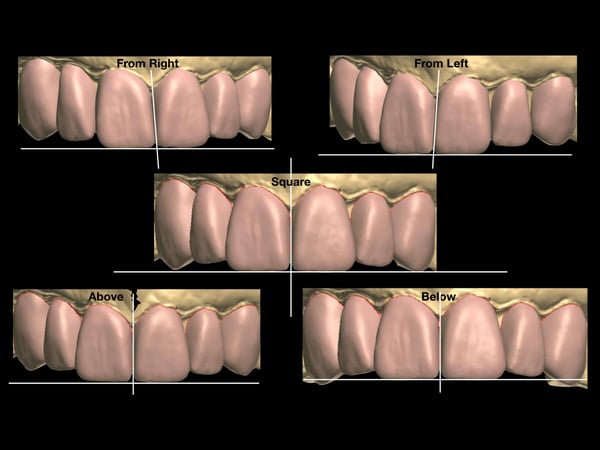 Figure 5
Figure 5
Figure 6 shows the very common issue with incorrect length (short in this case) even though it appeared correct during modeling. (Figure 7)
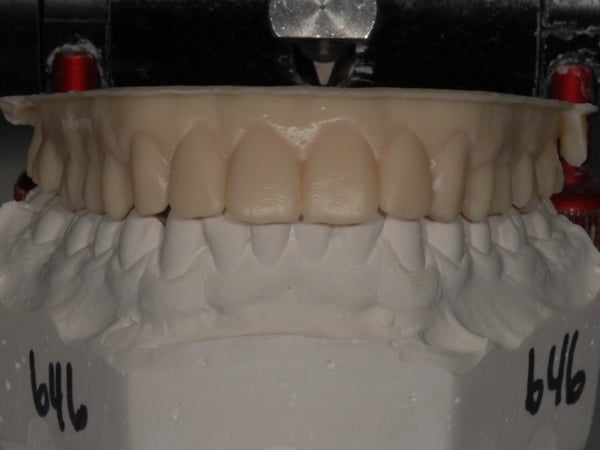 Figure 6
Figure 6
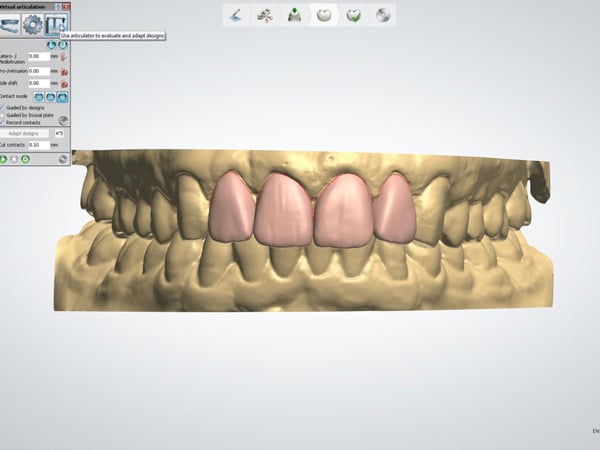 Figure 7
Figure 7







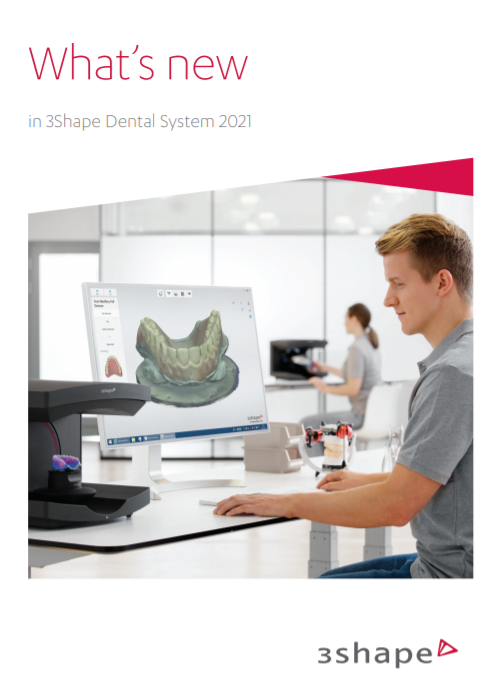



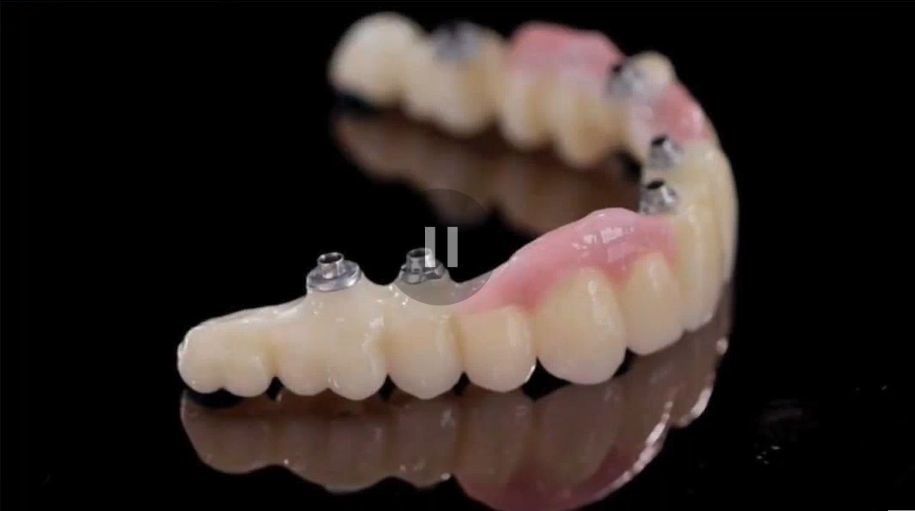

Leave a comment